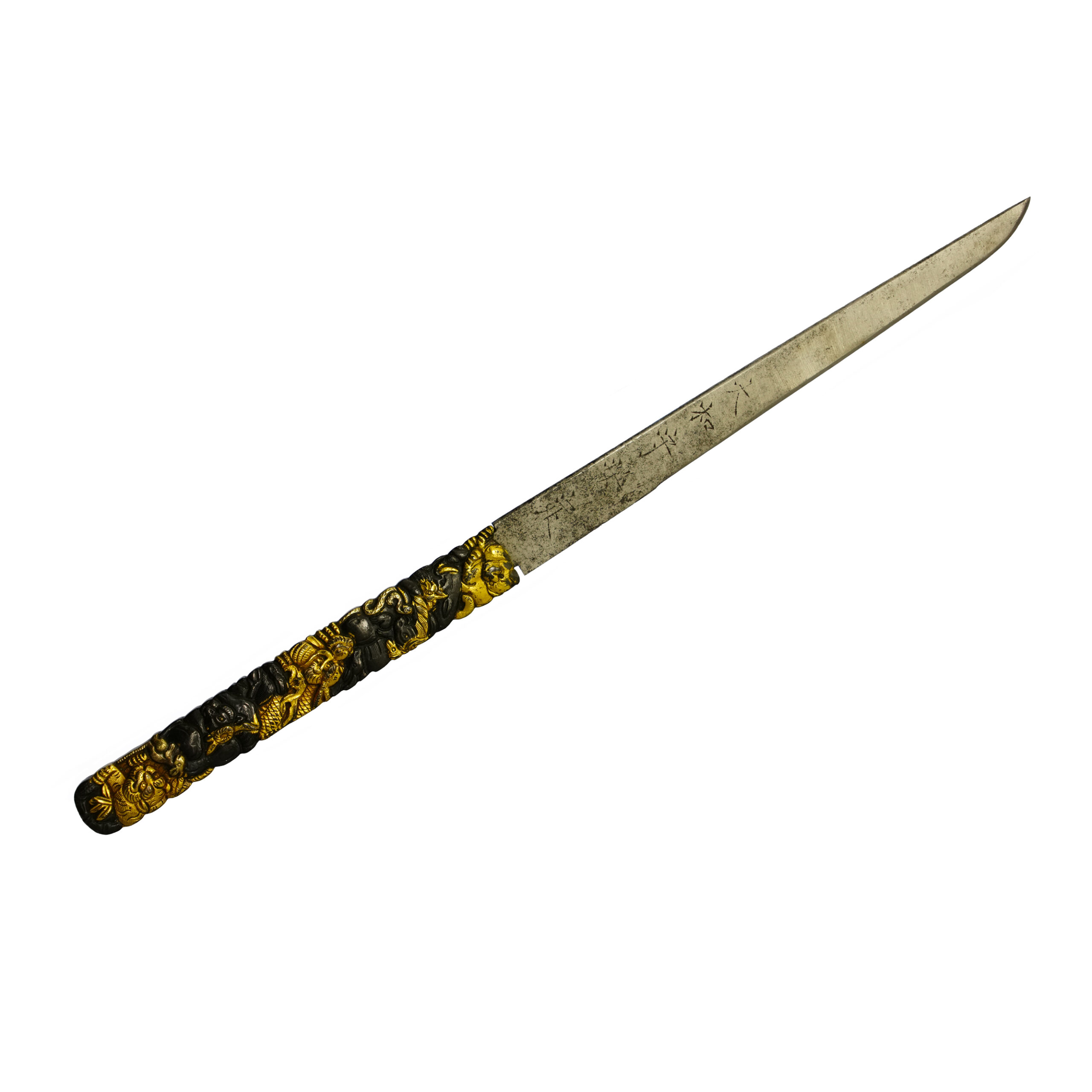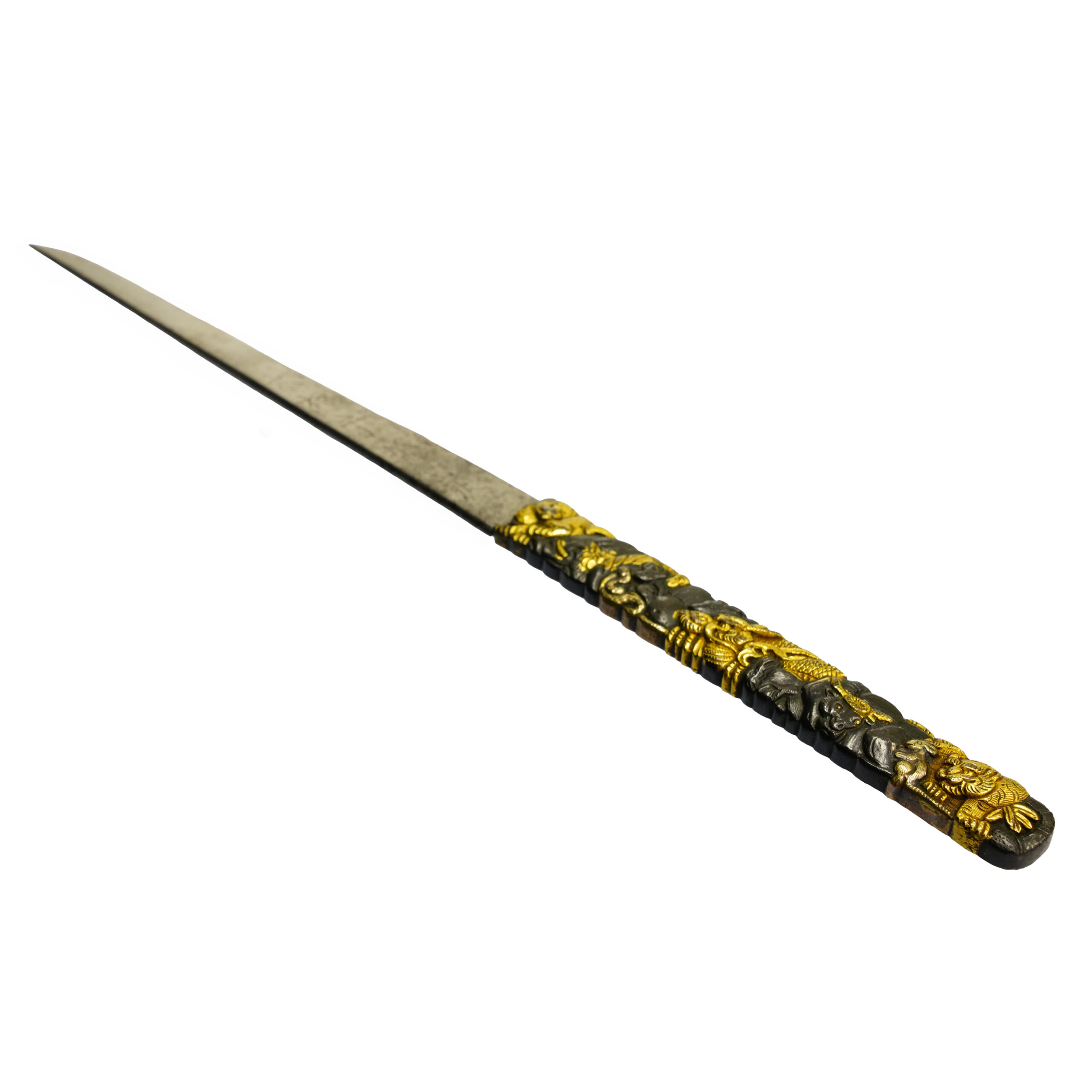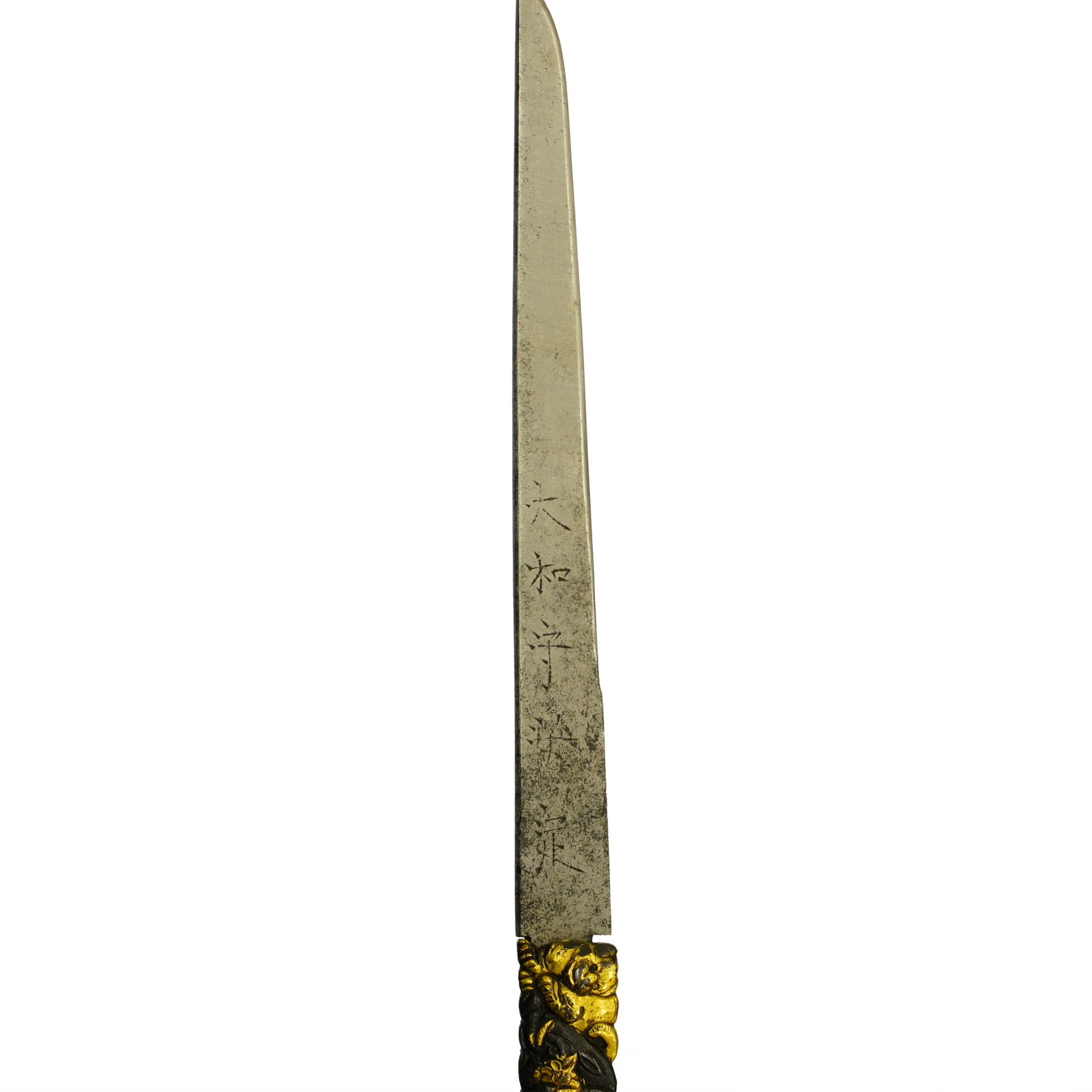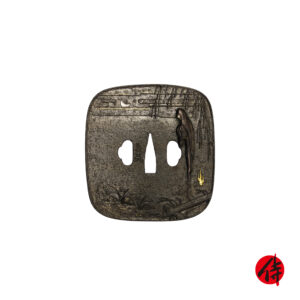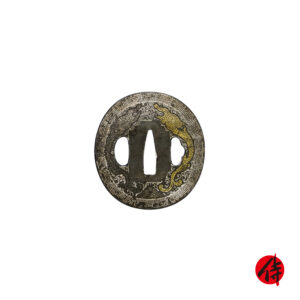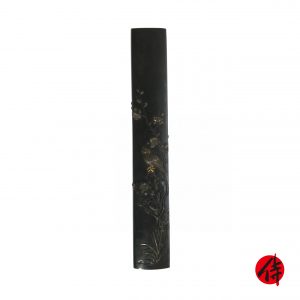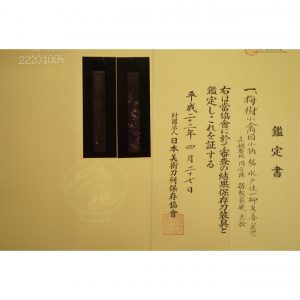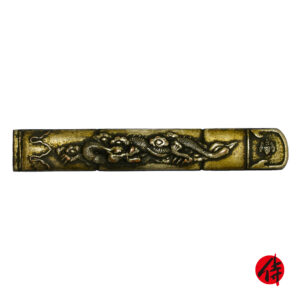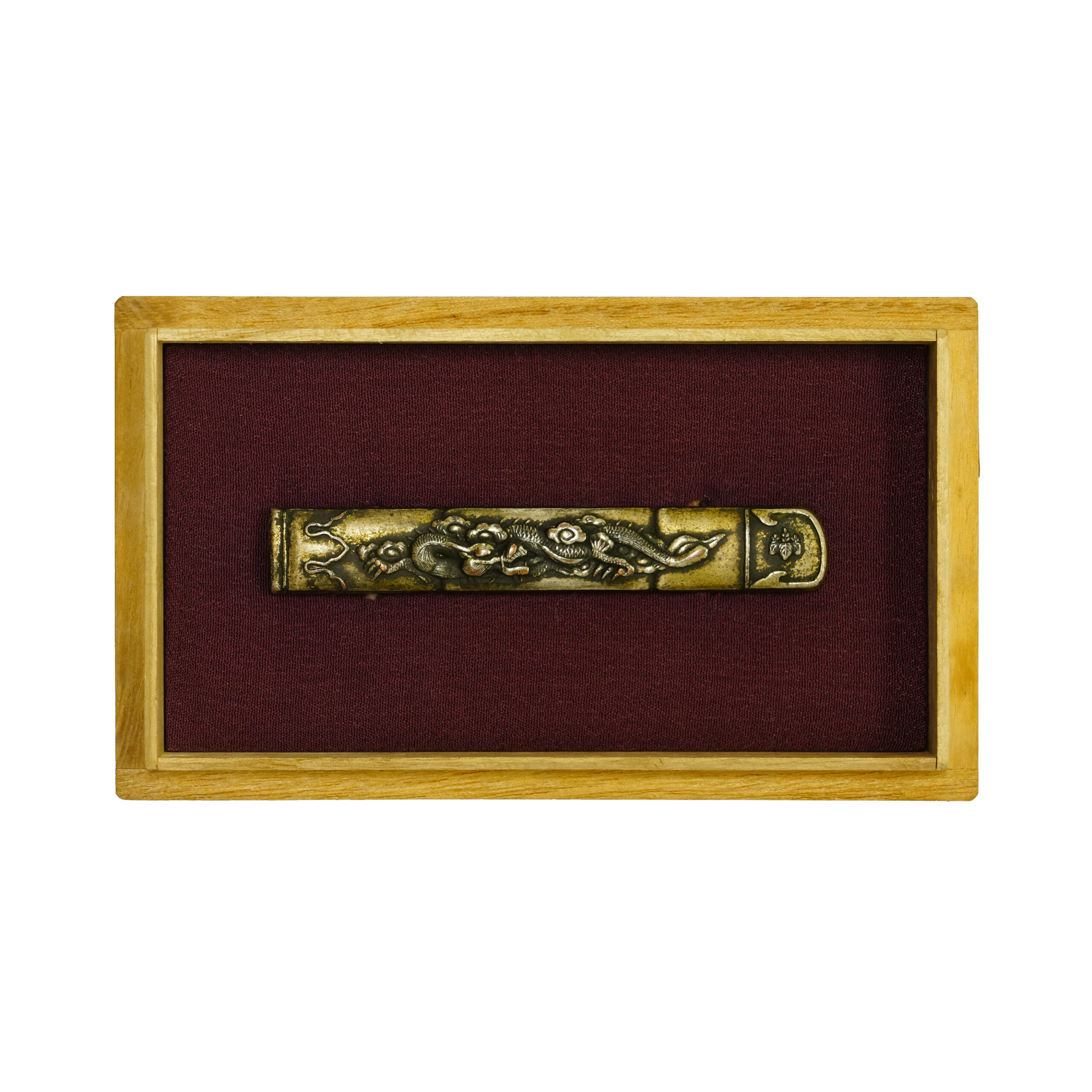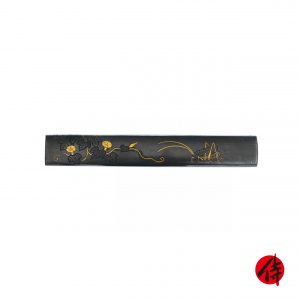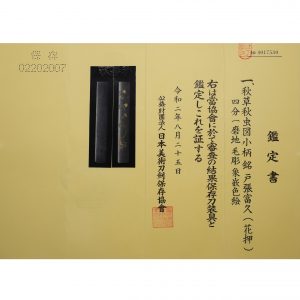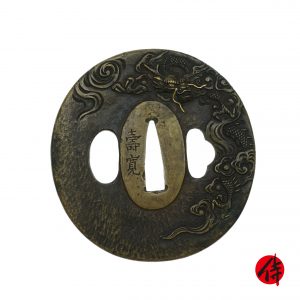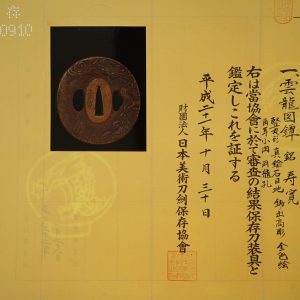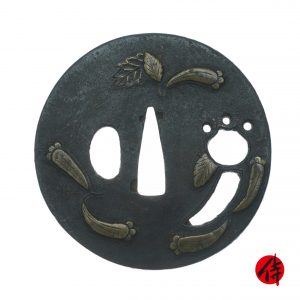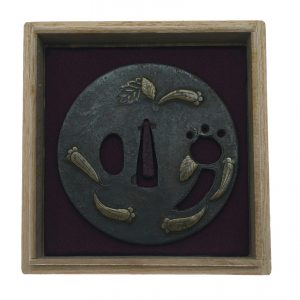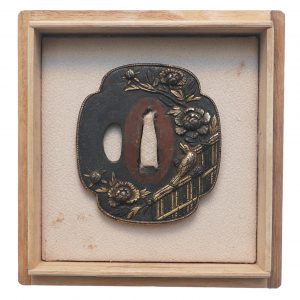Title: Junishi Zu
Description
A Kogatana (小刀, small knife) is stored in the Kozuka. There is a Mei (銘, engraved inscription) on the blade part of this Kogatana. It seems it is written as follows: 大和守安定 (Yamato-no Kami Yasusada). Please note that there is no proof of this signature.
This Kozuka has a very decorative look. The theme of this Kozuka’s design is related to the Junishi (十二支, the twelve signs of the Chinese and Japanese zodiac). The Junishi signs are generally in the following order: Ne (子, mouse), Ushi (丑, cow), Tora (寅, tiger), U/Usagi (卯, rabbit), Tatsu (辰, dragon), Mi (巳, snake), Uma (午, horse), Hitsuji (未, sheep), Saru (申, monkey), Tori (酉, chicken), 戌 (Inu, dog), I/Inoshishi (亥, boar). On this Kozuka, these animals are arranged in different order. Golden paint is partially applied to some animals.
The animals assigned to the Junishi are said to have auspicious meanings. For example, mice were treated as a symbol of prosperity because of their high fertility. Cows are a symbol of strength and are said to represent tenacity and loyalty. Tigers symbolize bravery, and rabbits symbolize leaps and progress. The dragon’s symbolism was influenced by continent-derived ideas and regarded as a symbol of power. Snakes were regarded as a symbol of eternity and rebirth because they grow by repeatedly shedding their skin. Other animals have also been thought to have various connotations, such as health, plentiful harvests, safety for families, prosperity in business, etcetra.
There are various theories about the details of the Junishi legend. Its rough outline is that the twelfth animals that arrived early at the feast that the god held on New Year’s Day were nominated as the representatives for the year. Each animal has a rustic meaning, and the Junishi itself has been treated as a lucky charm in Japan. It is said that the devotion of people who believed in the mysterious power of animals was linked to the Junishi, and the custom of welcoming the god of the year by decorating animal figurines associated with the twelve zodiac signs of the year in the entrance or living room was born. This belief might have inspired this Kozuka’s design.
*As this item is an antique, please check each photo and ensure its condition.
What is Kozuka?
Kozuka is the small knife stored in Kozuka Hitsu (groove of the sheath of the Japanese sword). Many Tsubas (handguard) have two holes to put Kozuka and Kougai (equipment for appearance) next to Nakagoana (a hole of the Tsuba to put sword), so that Samurai didn’t need to draw his sword out of the scabbard when he wanted to use Kozuka or Kougai. Initially, Samurai used it for cutting wood or attacking enemies in an emergency. It is said that Kozuka was used as a craft knife rather than a weapon.
The decorative designs of Kozuka were more emphasized than its practical use in the Edo period when Samurai society enjoyed one of the most peaceful times. And there were many ornamental Kozuka and Kougai created by Japanese metalworkers.
Why is it that the sword mounting was important for Samurai?
The sword mountings of the Japanese sword have many kinds of decorations such as handguards (Tsuba), sword hilt (Menuki), pommel (Fuchi Kashira). The Japanese sword worked as a weapon and as an object to show who he was. For example, it shows their personalities and beliefs. You could say that it is like decorations for smartphones today. We recommend you zoom in on the pictures of the sword fittings. When you do so, you can see the skill of Japanese metal engraving techniques. They are mainly made of iron and copper with inlays of gold, silver, and bronze. When it comes to handguard (Tsuba), each one has a different outline and weight. These sword fittings that have lived with Japanese swords of the same age might be worth as much as the Japanese swords. They are inconspicuous parts of the Japanese sword. Nevertheless, if you are knowledgeable or particular about it, you will become a connoisseur of the Samurai.
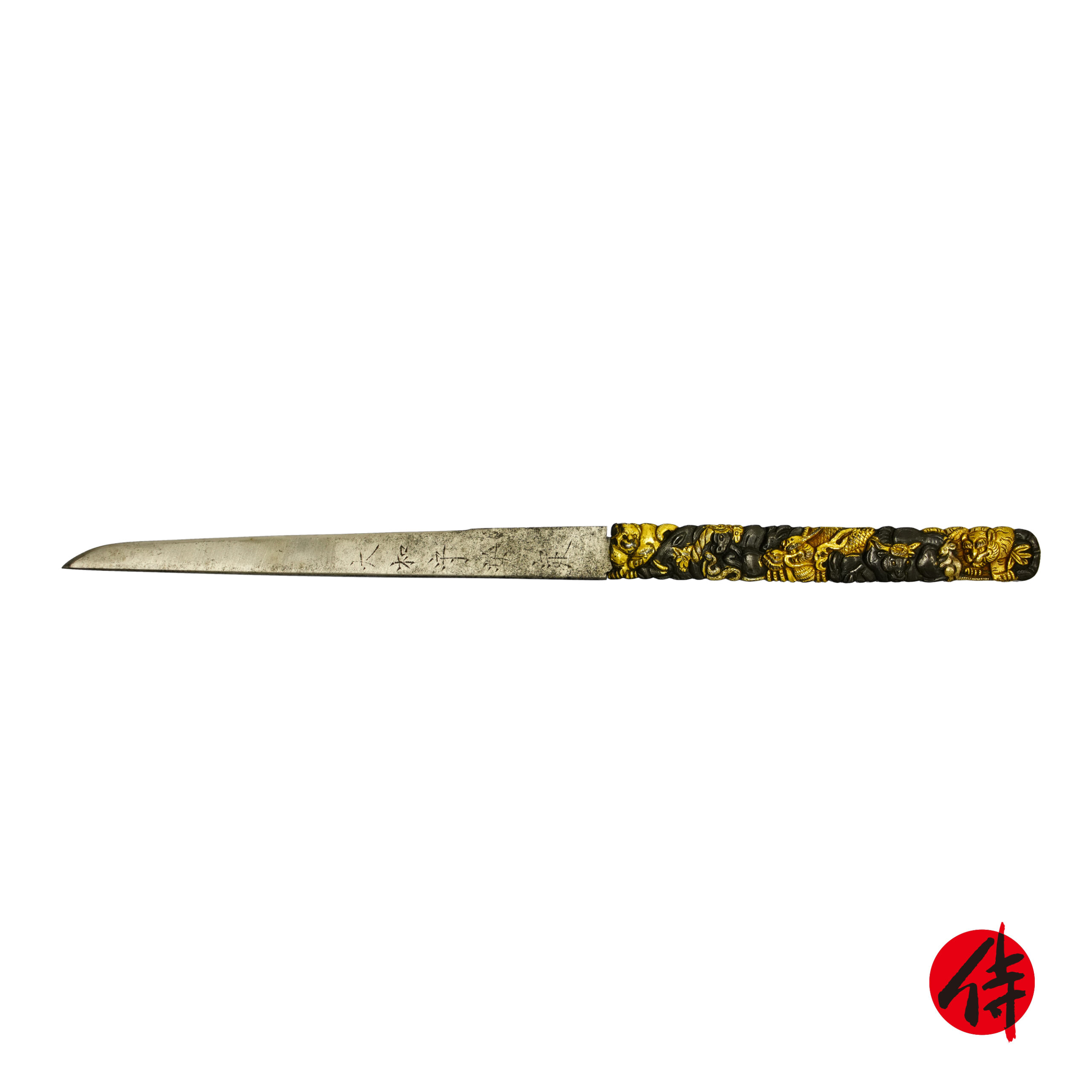

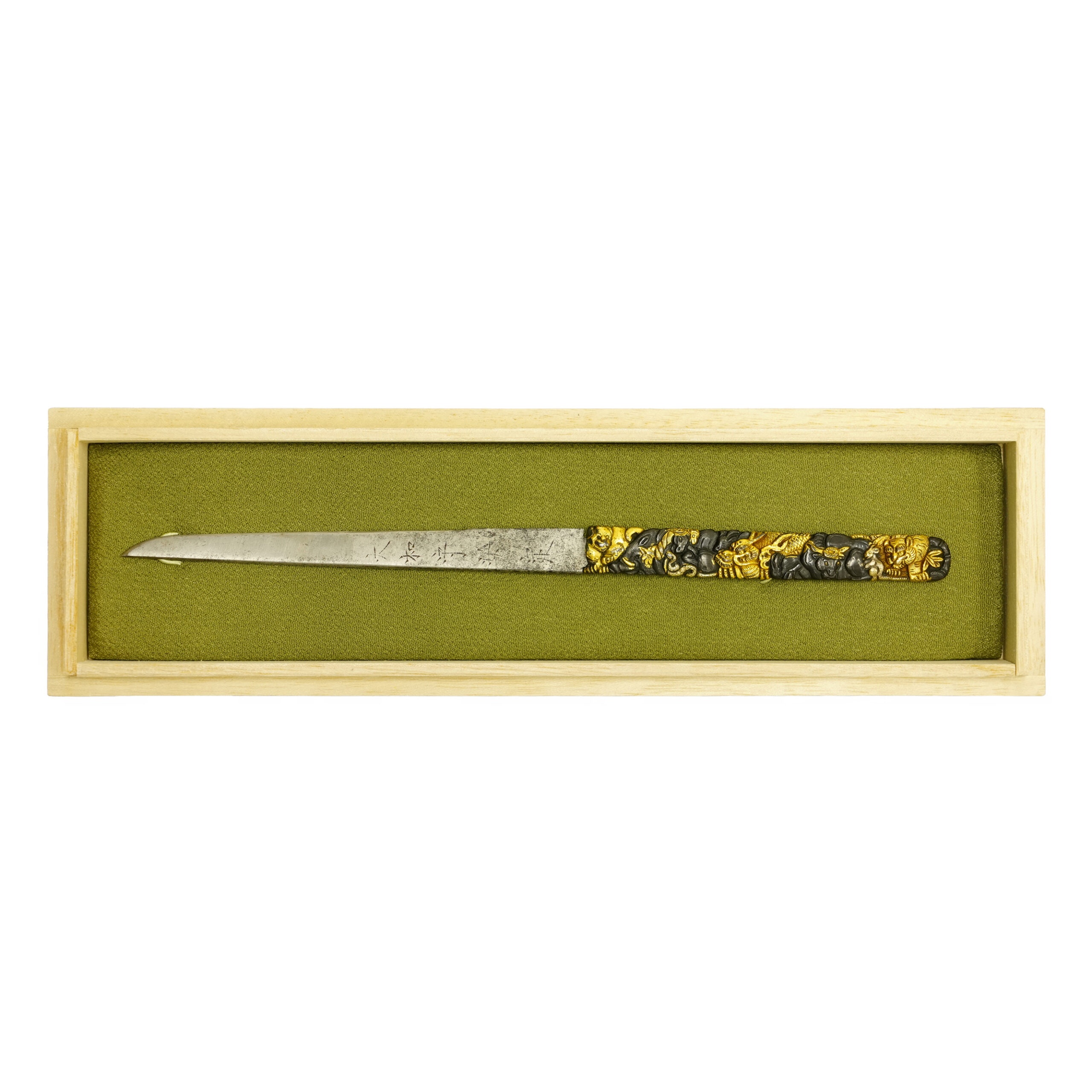
【About us】
Samurai Museum is located in Tokyo, Japan, exhibiting antique artifacts related to the Samurai history. Samurai Museum Shop is the place for those who are interested in Japanese culture and craftsmanship. We deal with antique Samurai swords/armor, traditional crafts made in Japan and so on.
【Payment method】
We accept payment through Stripe (Credit card), PayPal, Apple Pay or ChromePay, all of which are secure payment methods. Also, you don’t need to make an account on Stripe for the checkout. If you prefer other payment method, please contact us. You may either pay in JPY, USD, AUD, CAD, EUR, CHF or GBP. The price is set in Japanese Yen. Prices in other currencies are automatically calculated based on the latest exchange rate.

【Shipping duration】
We normally ship via EMS (Express Mail Service) provided by Japan Post. It usually takes at least 5-14 days to deliver the package after you place an order. Time of delivery is estimated as accurately as possible by the carrier but does not take into account any delays beyond our control such as by inclement weather, post office holiday seasons.
We offer Free International Shipping as long as we can ship your order by EMS. If you prefer other shipping carriers, please contact us.
We will inform you of the order’s tracking number via email. Please make sure you fill out your valid email address correctly.
*Please keep in mind that due to the spread of COVID-19, there might be possible delays in delivery. If you like to make sure if EMS shipping is available to your country, please contact us.

【How to make sure the condition】
Please keep in mind that what you are going to purchase is an antique item. We uploaded high resolution photos for you to check its condition thoroughly. If you like to see more photos with different angles, please feel free to contact us. We will be happy to send them to you so that you can make informed decision.
It is essential for us to know that you are happy with your choice of Kozuka and we are prepared to use the best of our ability to serve you.
Would you like see some more Kozuka for sale? Please check the link below. We hope you can find your favorite Kozuka.
https://www.samuraimuseum.jp/shop/product-category/decorations/koduka/
